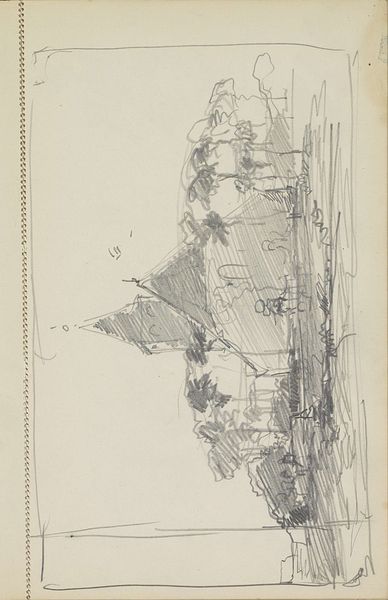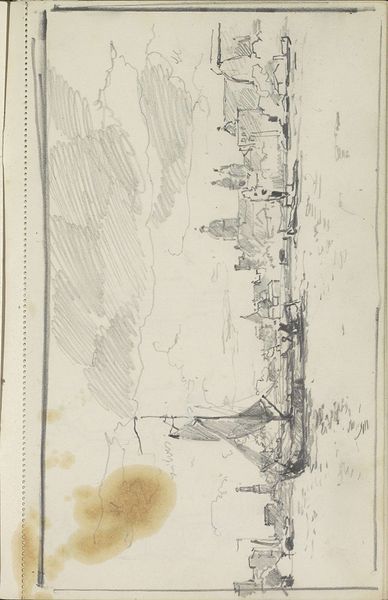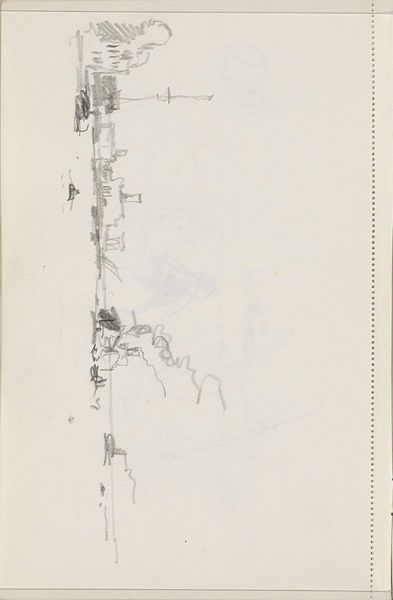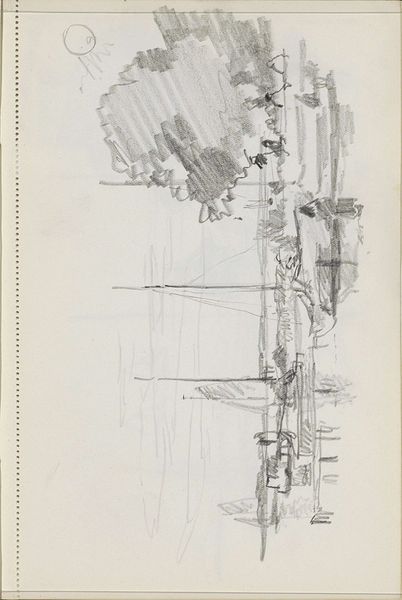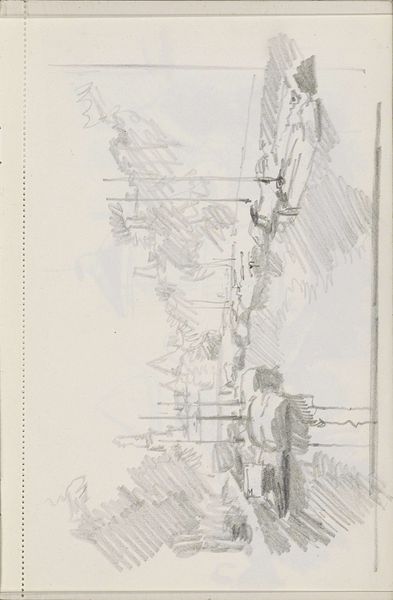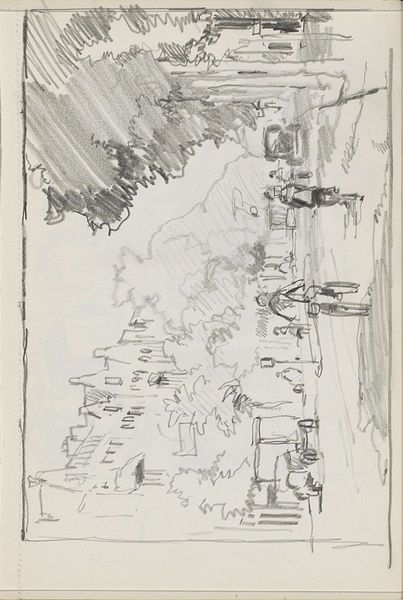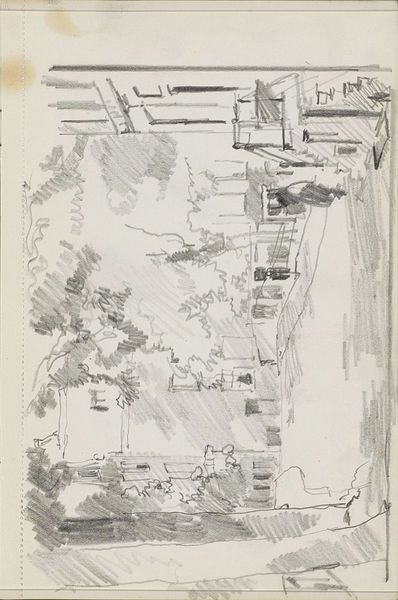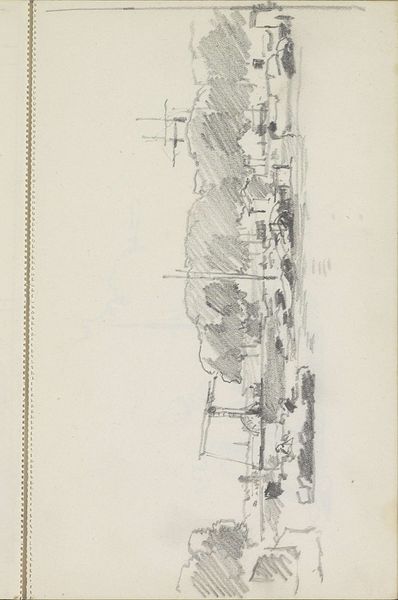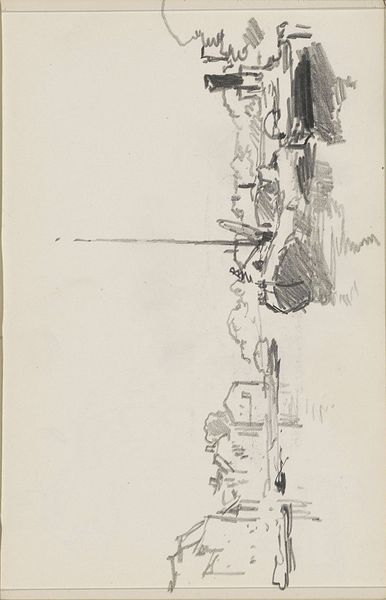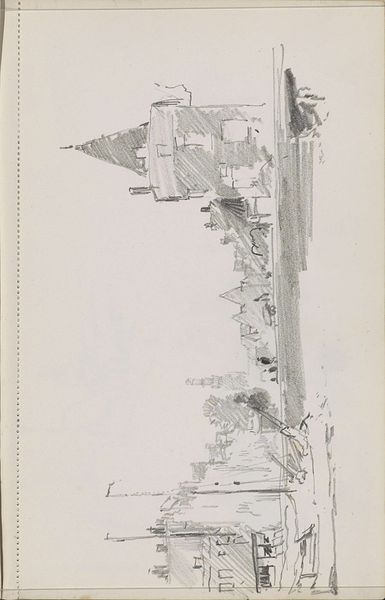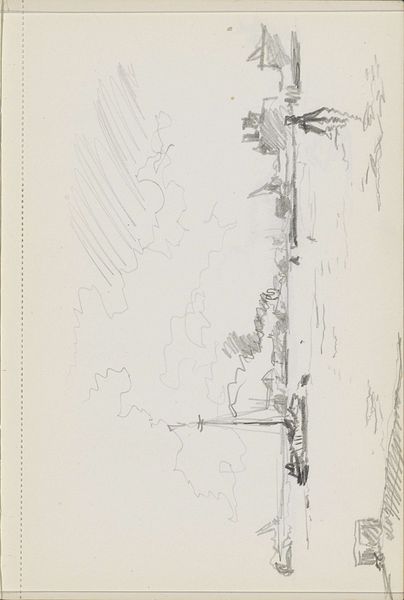
Copyright: Rijks Museum: Open Domain
Curator: This drawing, "Houses Along the Water in a City" by Cornelis Vreedenburgh, probably sketched sometime between 1890 and 1946, is a fairly straightforward pencil rendering of a cityscape. There’s a roughness to it, like a preparatory sketch, perhaps. Editor: Yes, it definitely feels immediate, like he was capturing a fleeting moment. I’m struck by the diagonal lines; they give a sense of depth but also a feeling of instability. How would you interpret Vreedenburgh's choices here? Curator: I see the rapid lines and the choice of pencil as directly tied to the rise of industrial capitalism during that period. Cheaper materials became widely available, allowing for this kind of spontaneous sketching, removed from the academic demands of formal paintings. This artwork is less about skill, or representing some deeper, elevated emotion, and more about simply seeing and capturing. Do you agree with that interpretation? Editor: That's a good point. I hadn't thought about the economic context of artistic materials. But doesn't the subject matter – a city – also hint at this rise of capitalism? Curator: Precisely. The architecture represents capital, the dwellings of laborers, perhaps the infrastructure supporting industrial growth. It's all intertwined, isn't it? Vreedenburgh’s pencil doesn’t idealize this city. It acknowledges its raw, constructed nature. The pencil and paper facilitated not only the production of the drawing, but made an art focused on urban development possible. Editor: That makes me look at it differently. It's less a pretty picture and more a record of a specific socio-economic moment. Curator: Exactly. Focusing on the materials and how they were used really unlocks the work's significance. It moves beyond mere aesthetics. Editor: I learned a lot about the influence of material and economic context of a piece. I’ll certainly keep that in mind when analyzing other art. Curator: Indeed, it’s about moving away from idealized notions of artistic creation to understanding art's making as intrinsically tied to broader material conditions.
Comments
No comments
Be the first to comment and join the conversation on the ultimate creative platform.
